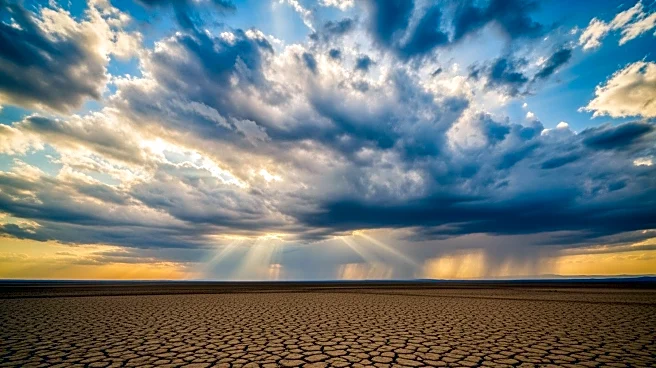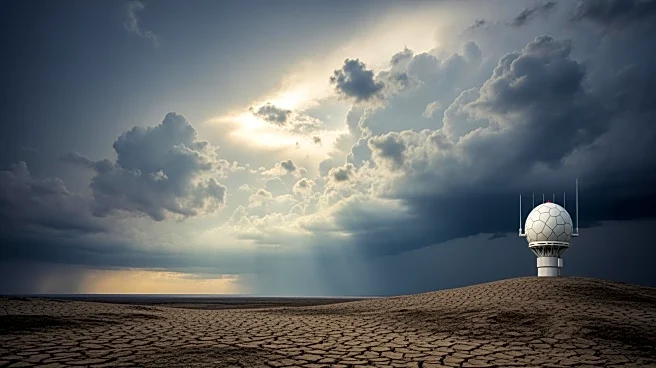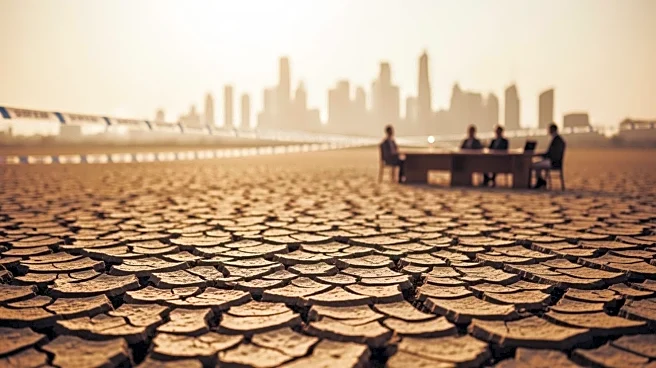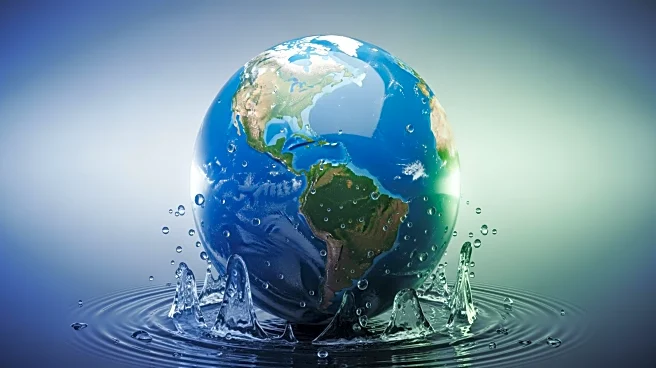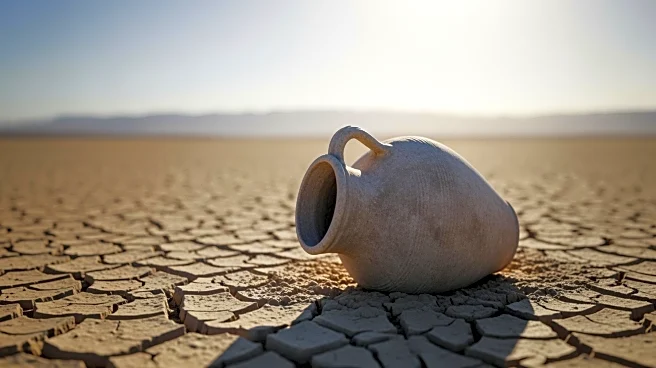What's Happening?
Iran is facing one of its most severe droughts in decades, with rainfall levels at record lows, prompting authorities to initiate cloud-seeding operations to induce rainfall. The Iranian National Weather
Forecasting Center reported a significant decrease in rainfall, marking the driest autumn in 50 years. The cloud-seeding process involves dispersing chemicals into clouds to stimulate rain, and operations are currently focused on the Lake Urmia basin. This initiative is part of efforts to combat the shrinking of key reservoirs and the looming threat to drinking water supplies in major cities, including Tehran. The drought has persisted for five consecutive years, exacerbated by climate change, and has transformed Lake Urmia from a thriving tourist destination to a salt plain.
Why It's Important?
The drought in Iran poses a significant threat to the country's water resources, impacting both urban and rural areas. The reduction in water availability could lead to severe consequences for agriculture, industry, and daily life, potentially causing economic instability and social unrest. The cloud-seeding operations represent a critical intervention to mitigate the immediate effects of the drought, but they also highlight the urgent need for sustainable water management solutions. As climate change continues to exacerbate environmental challenges, Iran's situation underscores the broader global issue of water scarcity and the need for innovative approaches to resource management.
What's Next?
Iran plans to continue cloud-seeding operations until mid-May, utilizing both airplanes and drones to increase precipitation in various catchment basins. The success of these operations could provide temporary relief, but long-term solutions will be necessary to address the underlying causes of the drought. The government may need to explore additional strategies, such as improving water conservation practices and investing in infrastructure to support sustainable water use. The international community may also play a role in providing support and expertise to help Iran navigate this environmental crisis.
Beyond the Headlines
The drought in Iran raises ethical and environmental questions about the use of cloud-seeding technology and its potential impacts on ecosystems. While it offers a short-term solution, the long-term effects on local climates and biodiversity remain uncertain. Additionally, the reliance on such technology highlights the broader issue of climate adaptation and the need for comprehensive strategies to address environmental challenges. The situation in Iran could serve as a case study for other regions facing similar issues, emphasizing the importance of proactive measures in climate resilience planning.
